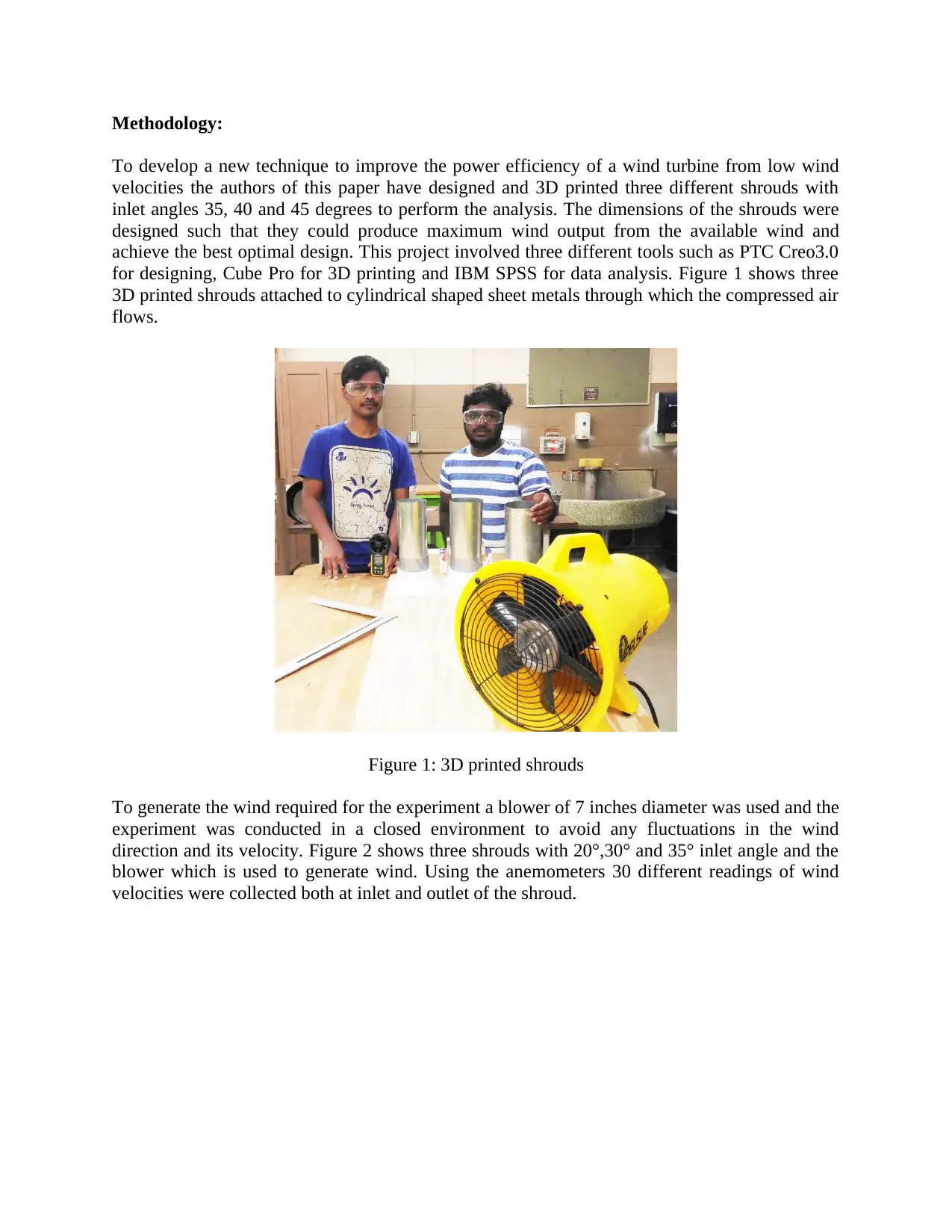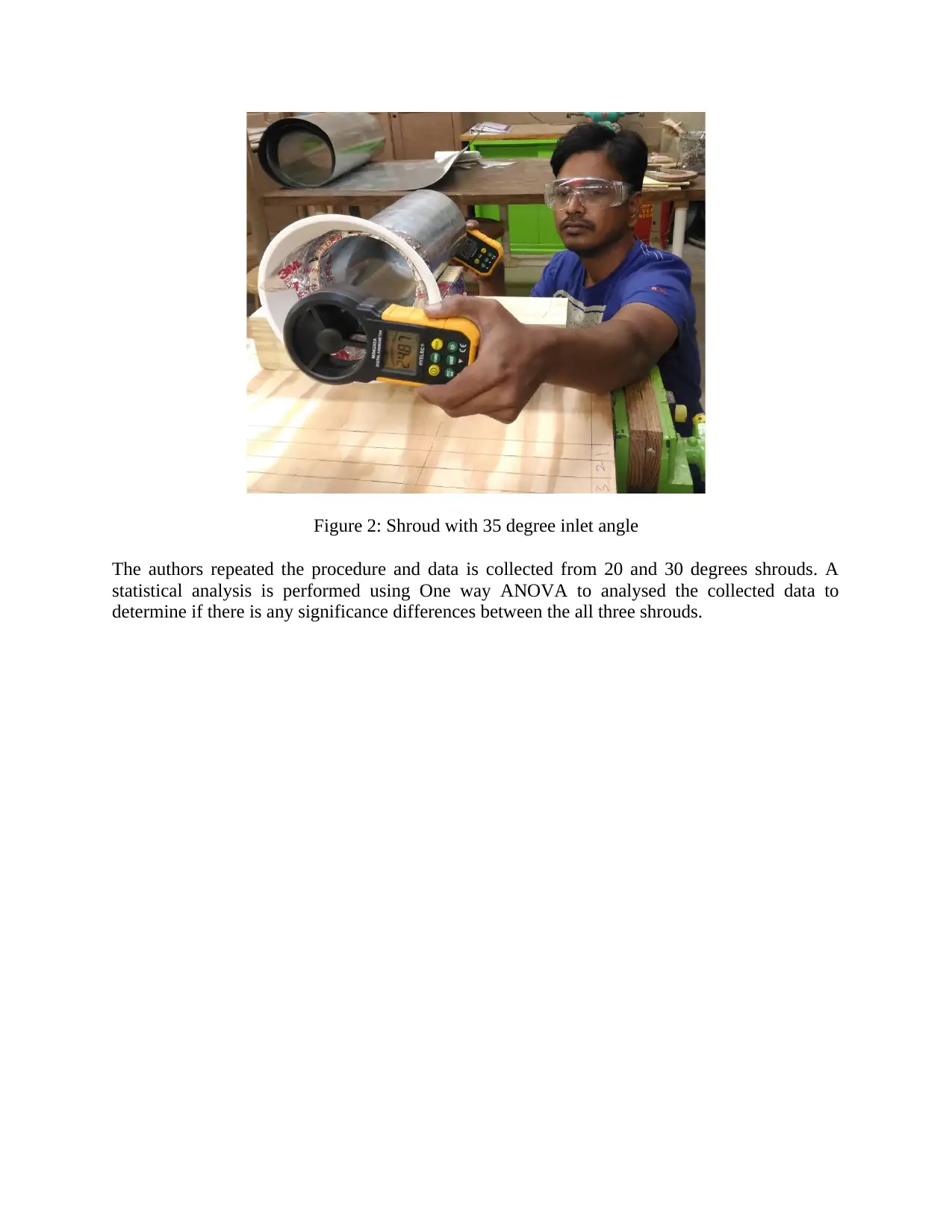Wind Turbine Power Efficiency: Shroud Design and Analysis
VerifiedAdded on 2019/09/20
|2
|255
|244
Project
AI Summary
This project investigates the impact of shroud designs on wind turbine power efficiency. The study involves 3D printing three different shrouds with varying inlet angles (35, 40, and 45 degrees) to optimize wind output. Using PTC Creo3.0 for design, Cube Pro for 3D printing, and IBM SPSS for data analysis, the experiment measured wind velocities at the inlet and outlet of the shrouds. Data was collected using an anemometer and a blower was used to generate wind within a closed environment. The experiment was conducted using three different shrouds with inlet angles 20°,30° and 35° and the data collected was analyzed using a One way ANOVA to determine the statistical significance of the results. This comprehensive approach provides valuable insights into improving wind turbine performance.
1 out of 2








![[object Object]](/_next/static/media/star-bottom.7253800d.svg)